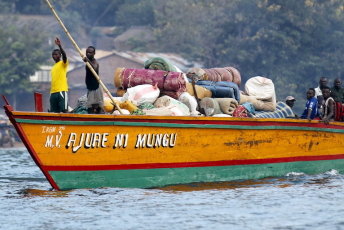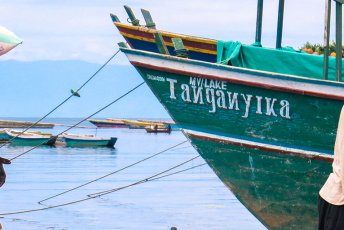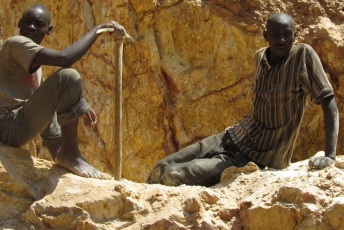The participants in the Kimberley Process, including 19 African governments, are meeting this week in Brussels to review the successes and failures of its first 15 years of operation and, many hope, adapt it to the demands of a changing environment.
The process was launched in 2003 by diamond-producing countries, much of the diamond industry and several civil society watchdogs. They were responding to growing global concerns about ‘blood diamonds’ – gems mined by armed rebel groups in African conflict zones like Sierra Leone, Liberia and Angola to finance their rebellions.
It created a scheme in which rough diamonds had to be certified as not having been mined by armed groups fighting legitimate governments – before they could be legitimately exported into the diamond market.
Fifteen years later, most observers would acknowledge that the Kimberley Process has done good work, especially in its early years. It probably saved the industry from what looked like imminent collapse as consumers threatened to boycott diamonds altogether after growing bad publicity. But the process has lost momentum and credibility and needs to rejuvenate itself to remain relevant and to maintain the market for mined gem diamonds.
Almost all the global non-governmental organisations (NGOs) that originally participated in the Kimberley Process have pulled out. Many left in disgust after June 2010 when the process decreed that Zimbabwe could continue selling rough diamonds from its Marange fields, despite evidence that the army had violently expelled artisanal miners from the diggings to grab the diamonds themselves.
Many of the NGOs, Western governments and much of the diamond industry called for a wider definition of a conflict diamond than the current narrow one of ‘rough diamonds used by rebel movements to finance wars against legitimate governments’. To these critics, the definition looked increasingly like African governments, in particular, were using the Kimberley Process merely to protect themselves.
Conversely most African governments, notably South Africa, resisted the demand for a wider definition to include government violence. They feared those making the demands were trying to deny revenue to governments like that of Zimbabwe, or were more broadly pursuing a ‘regime change’ agenda.
But the demand for broadening the scope of the Kimberley Process, including by expanding the definition of a conflict diamond, has if anything become more pressing since then. And it will be made again at this week’s Brussels plenary.
Pamela Fierst-Walsh, the United States senior adviser for conflict minerals and Kimberley Process focal point, told ISS Today that participants in the process needed to acknowledge that although the Kimberley Process had proved to be a good floor, it was not the ceiling, in what had become a much wider demand for responsible sourcing of not only diamonds but all minerals.
She said the millennial generation was much more insistent that the products it bought had caused no harm, and they would forgo the traditional mined-diamond engagement or wedding ring in favour of synthetic diamonds. She said the Kimberley Process addressed some concerns but not all – for example the behaviour by actors other than armed rebel groups involved in diamond mining, and the behaviour of armed groups not directed at overthrowing legitimate governments.
So the US and others are again pressing for this definition to be expanded. They would also like to see the Kimberley Process issue a declaration of wider principles that could be non-binding but which showed that the process recognised other issues in the process of how a diamond got to market.
‘It is important to be sure that a rough diamond did not fund an armed group in the process of coming to market. Of course. But that’s not sufficient,’ Fierst-Walsh said. Diamonds had to be safe also from ‘more official sources of violence, for example. And there are other criteria that we can discuss that relate to human rights more broadly, or environmental concerns, or labour conditions’.
Such a declaration should be achievable as most Kimberley Process member states had already signed other instruments such as the Organisation for Economic Co-operation and Development Due Diligence Guidelines or the UN Guiding Principles on Business and Human Rights. It might not be possible to certify all of these things now by a member state, but such a declaration would recognise the importance of capturing those factors in what the Kimberley Process stands for.
The Central African Republic (CAR) is a good example of the problems of the Kimberley Process. It was suspended from the process between 2013 and 2015 while it was overrun by rebel groups who controlled diamond mining. After a semblance of orderly government was restored in 2015, the process allowed the CAR to export rough diamonds from five zones of the country deemed free of rebel activity.
But an estimated 200 000 carats of illegitimate diamonds a year are leaking from the CAR into the legitimate diamond market. Critics of the Kimberley Process say that wouldn’t be happening were the industry taking responsible sourcing seriously right across the supply chain. They also say that the CAR shows that the Kimberley Process certification scheme, ultimately dependent on governments, can’t work where governments are corrupt or incompetent.
Some African governments will nevertheless probably continue resisting the expansion of the definition of conflict diamonds because that might bring it too close to home. Some might even resist the adoption of the proposed non-binding declaration of broader principles in the diamond industry out of suspicion that this could be a Trojan Horse admitting principles that could later become binding.
Against those concerns they will have to weigh the danger that unless the Kimberley Process adapts to the changing demands of an ethically more discerning customer, it may become irrelevant. And that could in turn jeopardise the market for mined diamonds.
Some African governments evidently want to solve the problem by simply banning synthetic diamonds. That’s obviously not the way to go. Mined diamonds must be able to compete in an open market that includes synthetics. And to do that, they must adapt to that market as it is today.







